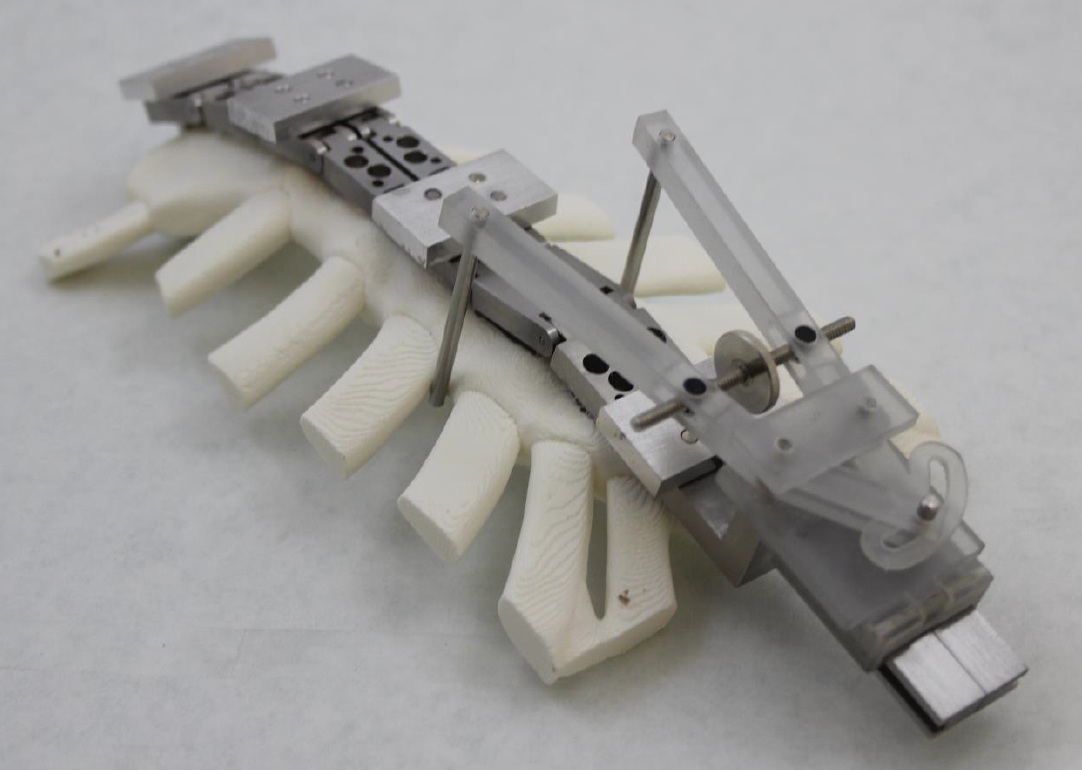A Novel Sternotomy Saw Guide Incorporating Integrated Rigid Fixation

As part of the Medical Device Design course I was selected to participate in junior year, I worked in a group with three other students to invent a sternotomy saw guide, a device used during open-chest surgeries to ensure the linearity of the incision through the sternum. The goal was to decrease mortality and morbidity occurring during open chest surgeries by serving two purposes: acting as a guide to restrain the motion of the blade and serving as a rigid-fixation closure system. Our team began addressing the issue by researching the design limitations of current sternotomy saw guides. To address these constraints, we decided to implement three main subsystems for our device:
- the alignment system that ensures the device is centered along the midline of the sternum,
- the guide that restrains the blade during the incision,
- and the closure system, which allows for quick and easy rigid fixation post-operation.
In total, our device took 150 man-hours to machine and was assembled from 125 parts. In addition to being one of the lead design engineers, I was responsible for generating designs in Solidworks, machining a final prototype, writing a technical report of our final results, and presenting our final design to physicians at Yale-New Haven Hospital. Additionally, we presented our work at the student competition in the Device Medical Design Conference at the University of Minnesota. Our device won third place.
Abstract – Every year, 700 000 median sternotomies are performed in the US alone. In this procedure, the sternum is dissected to gain access to the thoracic cavity using a bone saw, allowing for procedures such as heart transplantation, coronary artery bypass surgery, and tumor resection. There are many complications that can arise from this procedure, largely due to its reliance on the accuracy of the surgeon performing the cut. If the surgeon deviates from the midline of the bone, complications such as sternal fracture, sternal non union (where the two halves of the sternum do not properly heal, leaving a gap), and deep sternal wound infection can occur. Attempts have been made to mitigate these risks by using rigid plate fixation to close the sternum after the procedure. However, no attempts have been made to improve the accuracy of the incision, itself.
We propose a novel sternotomy saw guide that constrains the motion of the saw blade to the sternal midline. The device is temporarily mounted to the bone using a custom alignment system and a set of cancellous bone screws, creating a channel between which the saw blade travels. Upon completion of the procedure, the device is removed from the thoracic cavity, leaving a set of implant plates that are used to approximate and rigidly fixate the sternum to prevent healing complications. A proof of concept prototype of the proposed device was fabricated, and its efficacy was validated by performing a sternotomy procedure on a commercially available bone substitute. A significant increase in linearity was observed over the current standard of care procedure. In future testing, this device will be trialed with trained cardiothoracic surgeons to assess its viability.
The poster below was presented at the student competition in the Device Medical Design Conference at the University of Minnesota in 2017 where it won third place:
For further details please find the extended abstract: